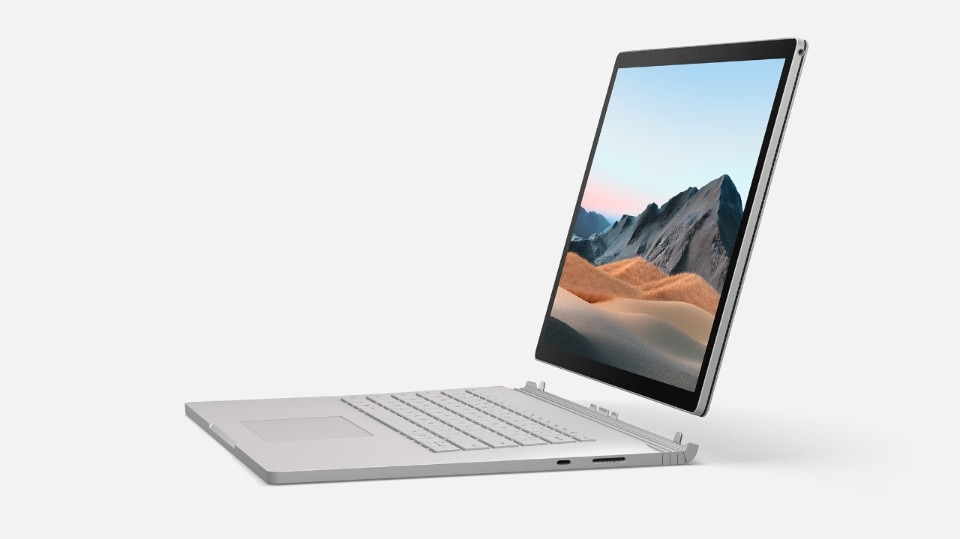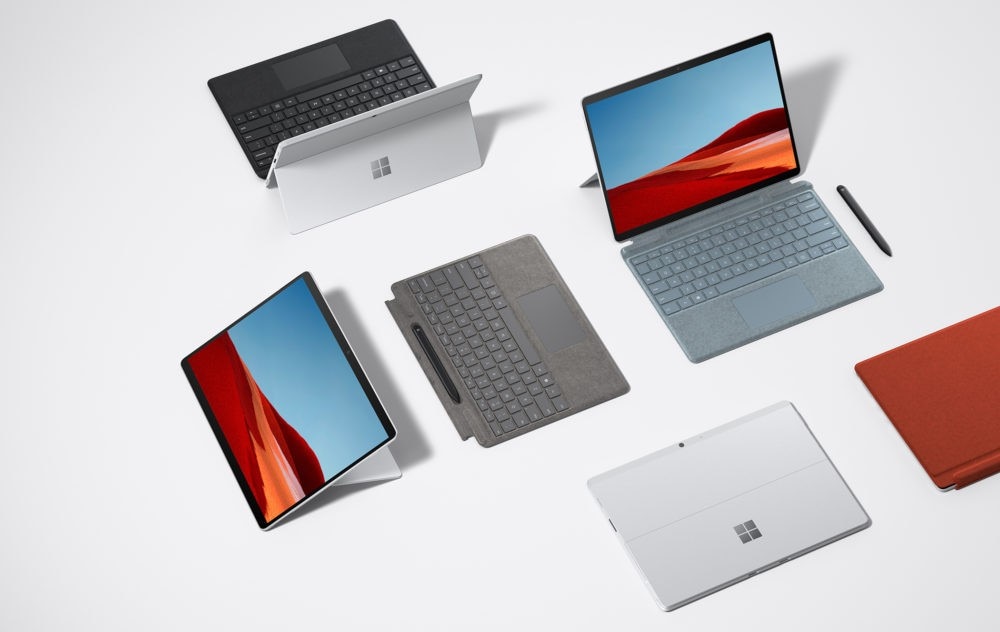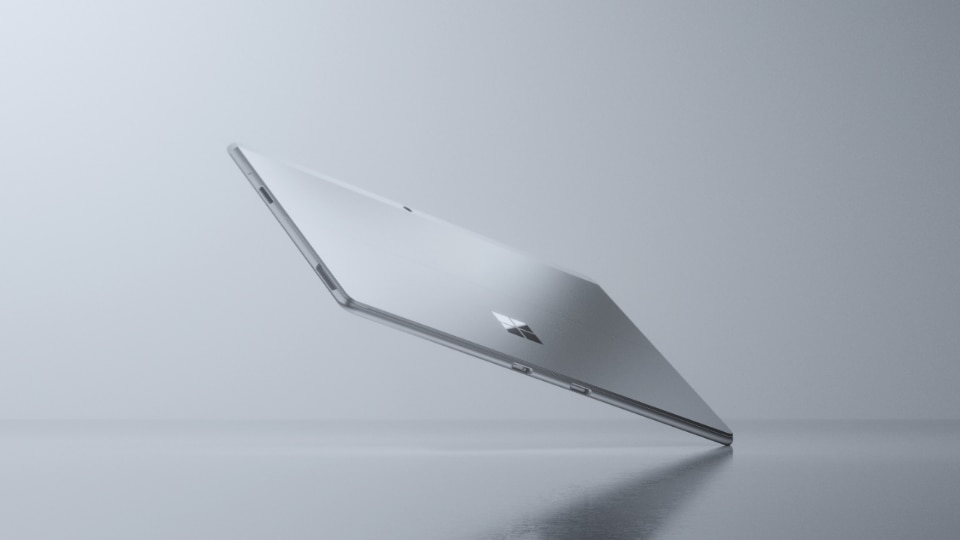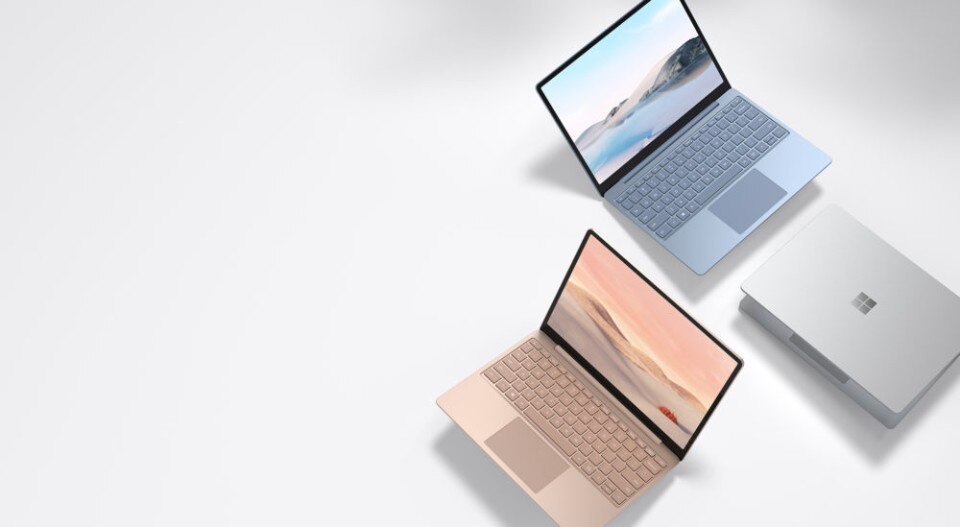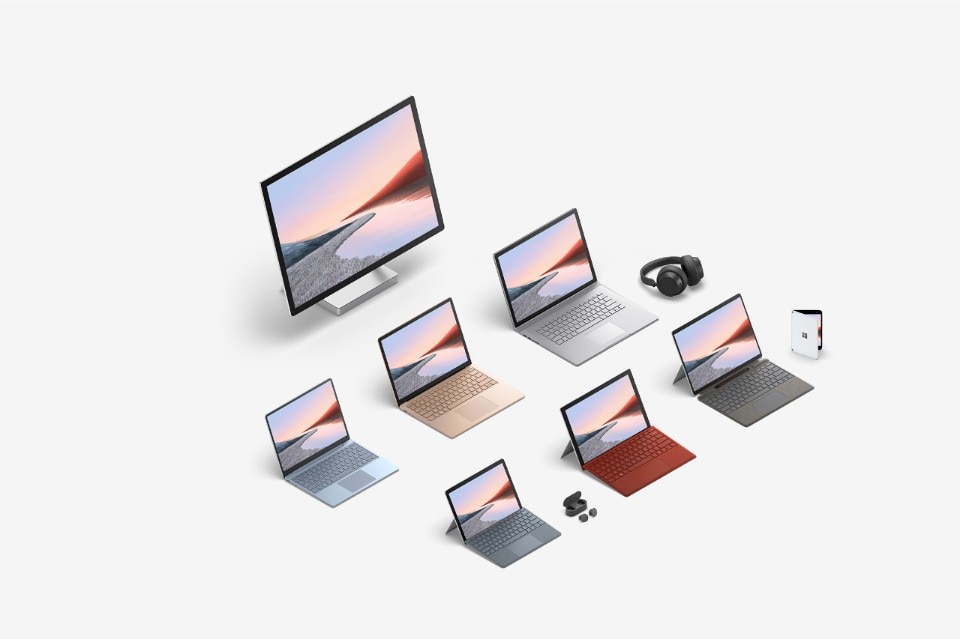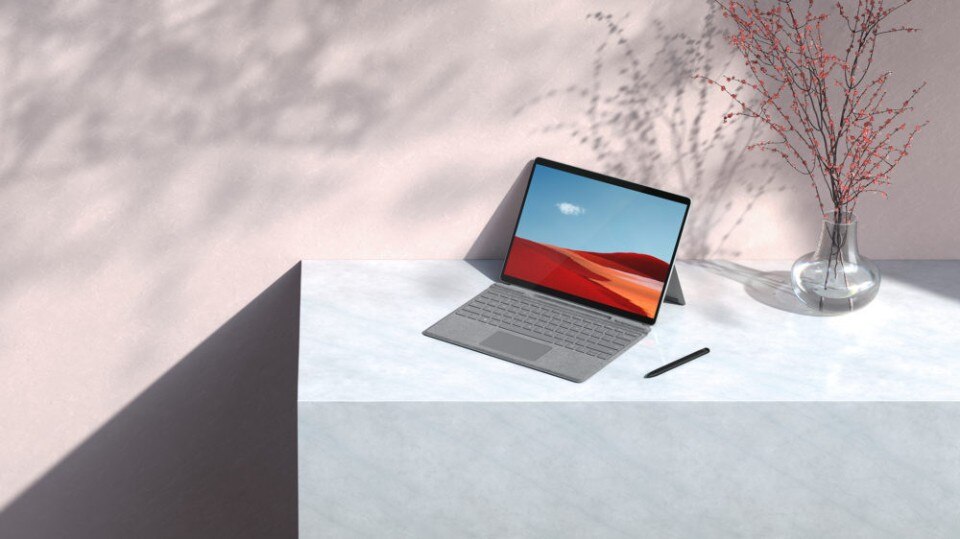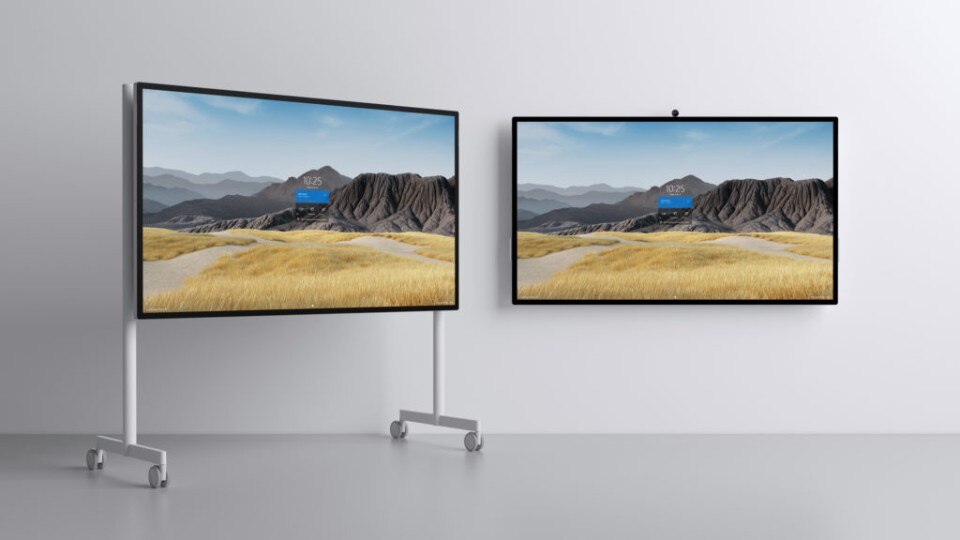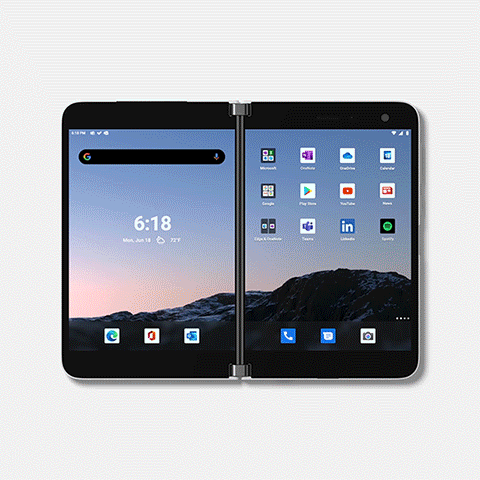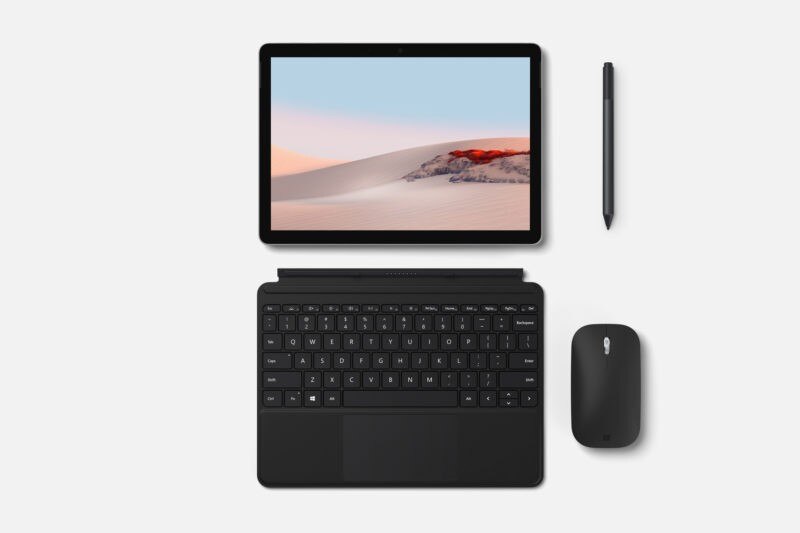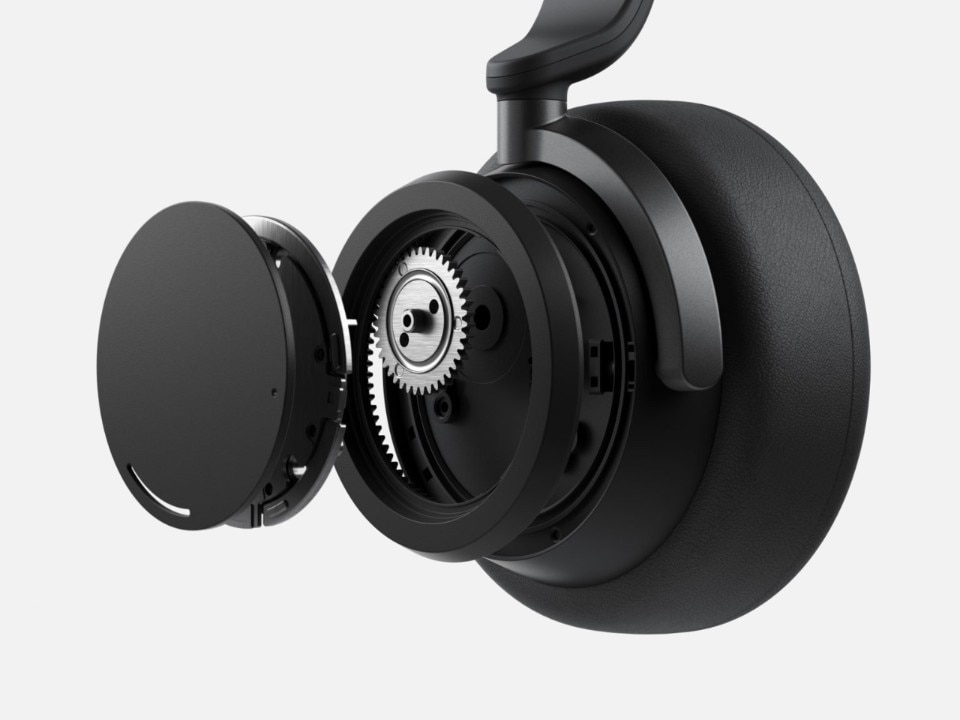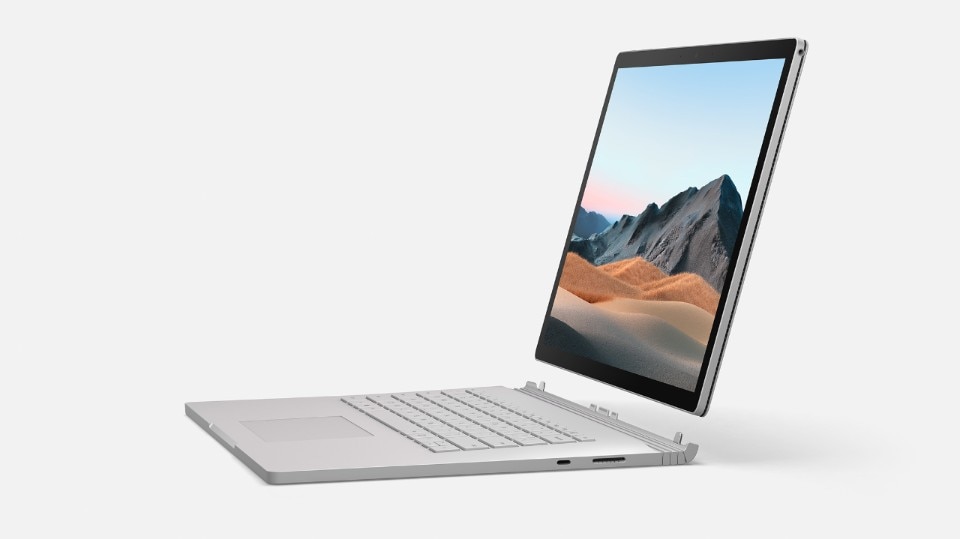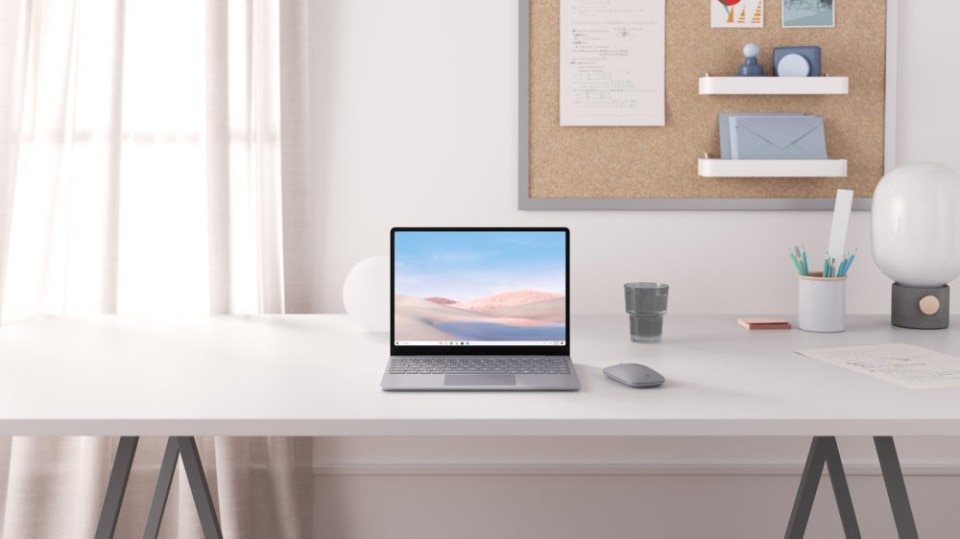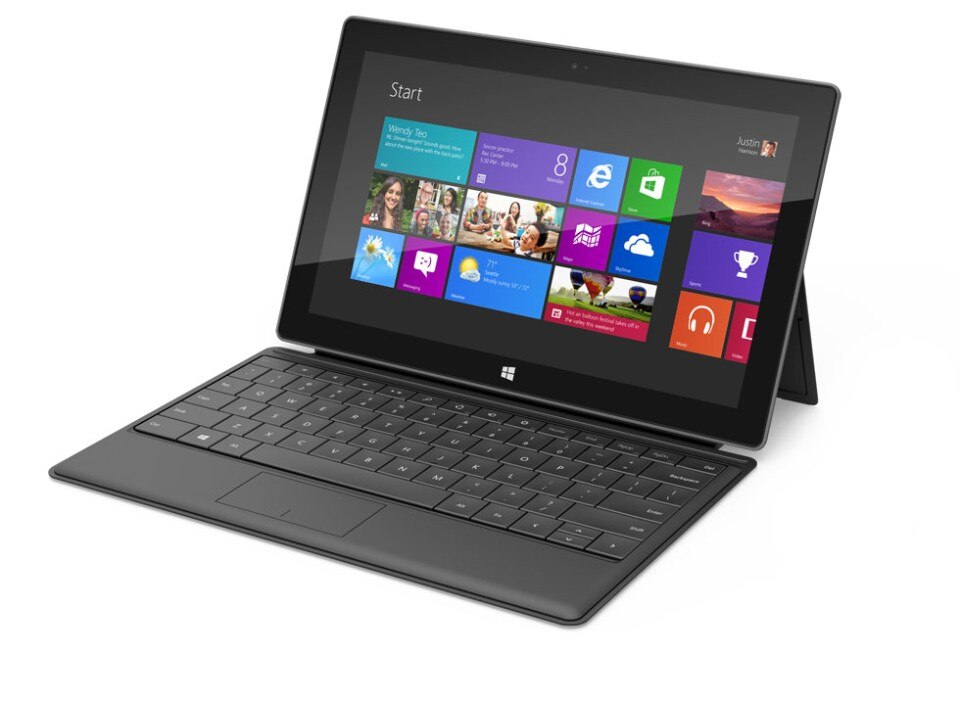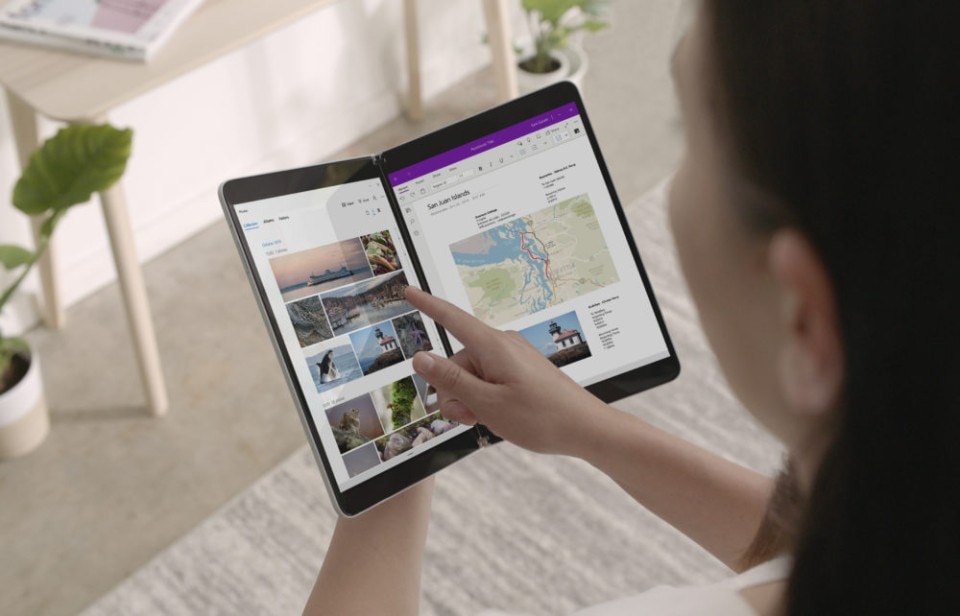In November 2006, Microsoft launched Zune, a portable media player, immediately labeled as a possible “anti-iPod”, a name that didn’t live up the expectations. The project was discontinued in 2011, and today it would be totally erased from the memories of most of us, if not for the cameo at the end of Marvel’s Guardians of the Galaxy sequel. One year after the death of the Zune player, in 2012, Microsoft launched the original Surface. And again, it was quickly labeled as the brand’s “anti-iPad” – where did I already hear that? Consider that at the time, the only successful piece of hardware conceived by the company founded by Bill Gates and Paul Allen was the Xbox, but it was a totally different story and the odds against Surface to end like the Zune were huge. But Surface survived, and did it well. Today, it is not a single device but a refined lineup ranging from tablets to laptops to headphones. The latest additions are a low-cost laptop, the Surface Laptop go, and two double-screen devices, Neo and Duo, which is already available in the US.
We were fascinated by this thought of how people create
Today Surface is a success, with a strong revenue – near to $2 billion in FY20 Q2 -, obtained product after product, and with a gigantic effort to always deliver an accurate design of both the device itself and its interface – which, of course, is Windows 10.
Surface Book 3, launched before the summer, is the last update of the product that most probably best represents what’s Surface at his core and its raison d ‘être. The device is a detachable PC, which means that the display, which also is the computer, like a tablet, can be used as it is, while docked to the gpu-powered keyboard base, it reaches its full power (and gets a physical keyboard, obviously). It was first unveiled in 2015, as a more powerful companion to the “classic Surface”, as Ralf Groene, head of Microsoft’s Windows and Devices Design Team, defines it, remembering those days. A device aimed mostly at creatives. “The idea of Surface Book came about seven years or so ago or maybe even earlier. We were finishing up what you call the classic Surface, the tablet with the kickstand, and we were fascinated by this thought of how people create”.
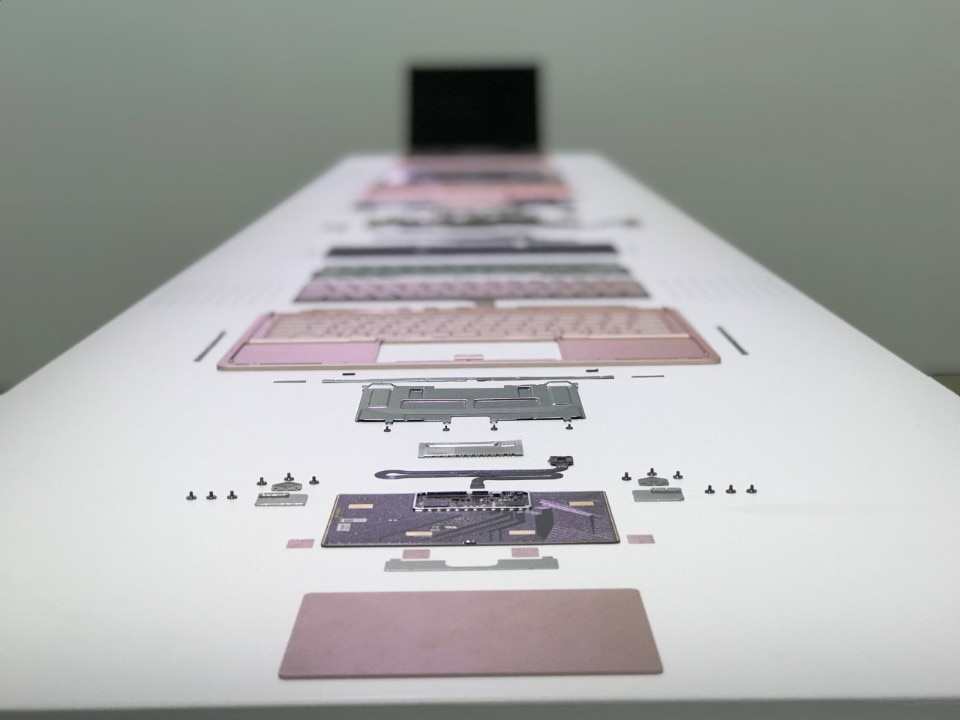
It’s all about creativity
What exactly is a “creative”? I’m not creative because I cannot sketch, many people just say, but they’re wrong, according to Ralf Groene. For him creativity is quite a different thing: “You can think about creativity as in making something where there was nothing before”, he explains, pointing out that it’s what a designer does, what an architect does, but also an engineer or maybe even lawyers do. The process is basically the same: first, you have an idea, then slowly this idea takes shape in your head, and then on paper, and then at some point you move it to the computer and then you go to your whatever Word and Excel or Illustrator and Photoshop or ArchiCAD.
An insight that led to a design concept
How do you engage people in their creative phase, to encourage a computer versus analog paper or whiteboard, was the question that led to the Surface design. “You know, I’m using paper and pencil for this interview and I’m taking notes and I’m making little sketches. If you do this digitally, you can easily share and annotate and archive. Especially useful in these days when creative teams are not in the same room”. Groene recalls that the idea that came up to the Microsoft designers around one decade ago is that if you’re in your concept phase, it’s be great to have a tablet. Still, later on, it would be great to turn this tablet into a computer to use your regular apps. And so the Surface was born.
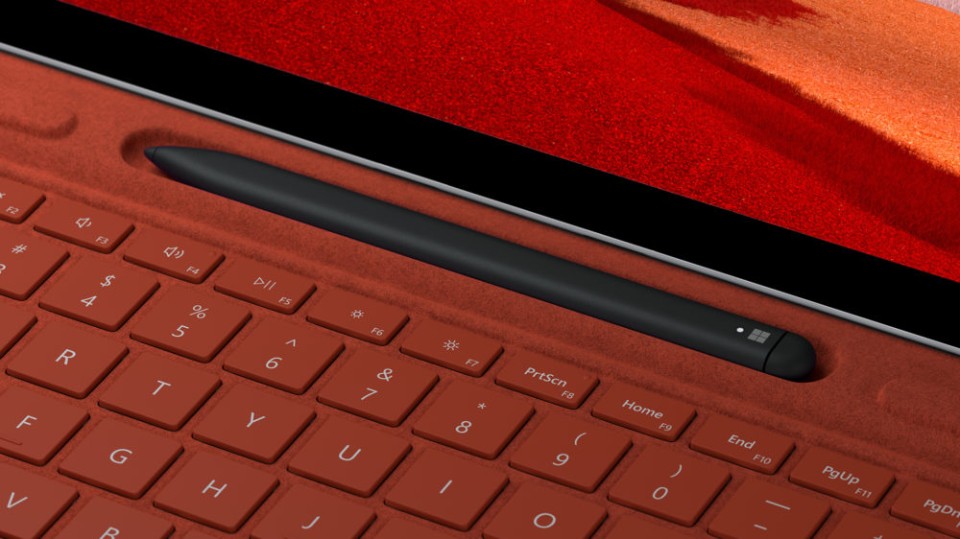
How do we engage people in their creative phase, to encourage a computer versus analog paper or whiteboard?
The pen
Surface Pen was introduced back in 2012, with the launch of the very first Surface Pro. Since then, it has been a precious companion to many Surface users. But to associate pens and PCs wasn’t always obvious, and maybe it isn’t even today. “The interesting thing that we learned is that it took some time for people to learn how to use a computer with a keyboard and now we’ve done it for so many decades that we don’t even think about it anymore”, Ralf Groene says. “But the pen was really a new thing, and when we launched it, there were some sketching apps and Photoshop that were already using pen, but in productivity – like Word or annotating elements or marking up your photos – these types of activities didn’t exist because of software was not optimized”. So, adopting the use of a stylus in the Windows ecosystem wasn’t all that immediate. “It took a couple of years for Windows and Office to embrace the fact that now people have a pen”.
But now things have changed, as Groene points out, many people buy the pen because they feel it is kind of a future device for them to use. “Sometimes technology is so fast and users’ behavior so slow, but the technology has to make sure that you don’t leave the customers behind”.
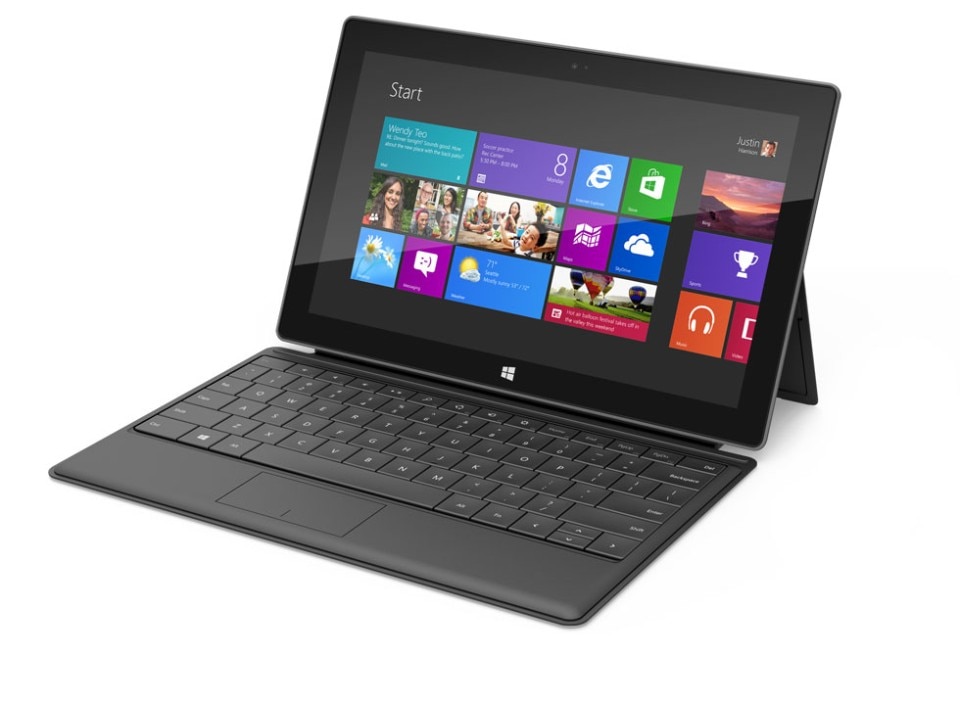
When Microsoft went “hard”…
Pens work on sensors. And sensors are one reason why it makes sense that Microsoft has stepped into hardware production, too, as Groene explains. “It’s interesting to think about what actually triggered Microsoft to make hardware. If you look in the history of early 80s, supplying software to as many hardware makers as possible made Microsoft insanely successful, this was Bill Gates and Steve Ballmer and Paul Allen strategy as time moved on”. But there’s a big advantage of having software and hardware being one system, as Ralf Groene explains, because “products have sensors all over the place, that the software uses to understand positions, how far a screen is open or if it is detecting a face or if it tuned for a particular set of speakers and microphones. Having these elements being designed together improves the quality dramatically.
… and how Surface changed Microsoft for good
After a decade making computer, “culture has changed” in Microsoft: people who spent their careers designing software now all of a sudden open their minds in terms of how does software relate to hardware. And six months ago the team of Ralf Groene took the task to design Windows, too. “The cool idea is to bring people’s work environment and people’s life environment together, so these things live in harmony”. Microsoft evolved and changed his skin, adapting to times when the twilight zone between work and private life is getting bigger and bigger.

An interlude: the switch
“Before I became a designer, I was a toolmaker in Germany. At the end of the work day I had a punch card. From the moment that you punch it, it’s your free time. Back then there was no cell phone, of course, no computers in the way that we use computers now, and so there was a clear separation between work and life. Now, I want to design this big switch, almost like an emergency switch on these big machines, and when you push it, then there’s no internet. I think there’s a big need on unfocusing and turning things off”.
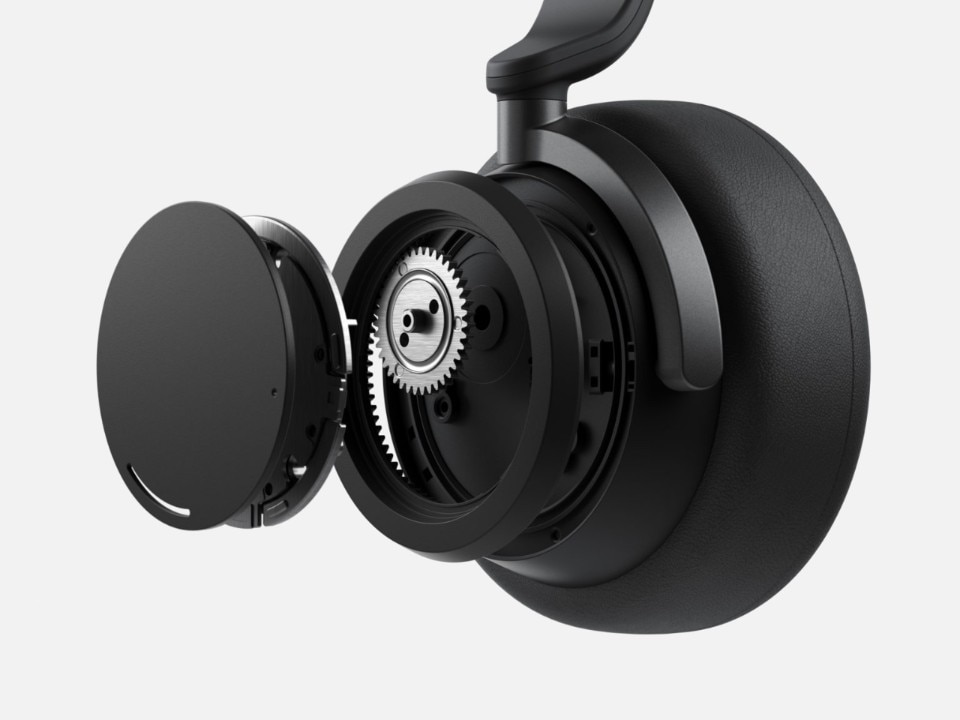
Creation and consumption: Surface vs iPads
At this point, Mr. Groene does something that surprises me: he openly talks about Apple and the iPads. And so I understand that hardly you can talk about the Surface without mentioning its most-known rival. Because the original Surface was a reaction to the first iPad. “The iPad, which came out a little bit before the classic Surface, showed the idea of a consumption device, where you use a computer for entertainment, mostly browsing”, Groene says. The Microsoft approach was different because the creative team worked on a device that could mix creation and consumption. That device, the “classic” Surface, which debuted in 2012, was the answer to a series of questions regarding how do you mix the part of your life that you spend to make money with the part of your life that you call home, and computers being intermingling.
The classic Surface was “not only a tablet, but a tablet with a kickstand and a keyboard, so that it can be turned into somewhat of a laptop”. Other products followed, the philosophy remaining the same: “Surface Studio is very much the same thing; you can use the Surface Book just on the screen and then you can turn it into a more classic computer; for Surface Hubs, these big 80 inches wall-mounted meeting room type of computers, it’s very much the same idea”. Even the earbuds, one of the latest additions to the Surface lineup, are “the same idea just in a different product”, Groene says.
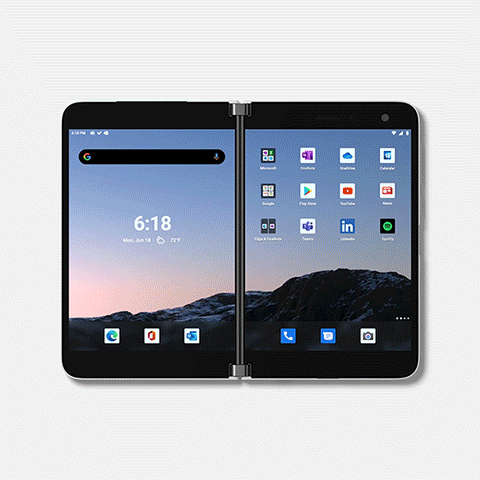
A present future of dual-screen devices
Duo and Neo are two brand-new double screen devices, which come from the need to deliver “purposeful innovation”, Microsoft explains to Domus, “not just move technology forward, but to move people forward”. Surface Neo, which is due in 2021, is basically the first dual-screen Surface tablet, which will pioneer Windows X, a bespoken edition of the operative system for devices with multiple displays. Even more disruptive in Surface’s history is Duo, released in September, a dual-screen Android phone and personal assistant (remember of PDAs?), which was designed to offer the productivity of two screens on a product that fits in your pocket – something that traditional pocket-sized devices don’t do, because they “you continually have to switch between apps to get even the most essential things done – breaking focus, breaking flow”. This is also the first Surface device which isn’t powered by Windows – the last smartphone operative system by Microsoft goes back to 2014: for Surface Duo, Microsoft is working closely with Google “to make additions to the Android operating system, paving the way for more apps to take advantage of the full productivity power of two screens”, building “some very unique experiences that you can only get on the Surface Duo”.
The other side of future
There are about 1.5 billion people on Windows 10 platform, today in the world. “If I look into the future I’m very concerned about every piece of packaging that we carry around”, Groene says: “If you open a Surface, it comes in this beautiful white box, but after you’re done opening it and have the product in hand, you have a pile of cardboard and sometimes some plastic foil that you have to throw away, and and we’re working hard to change this. There’re different ways of how you can change it, but it is a big concern”. So, something will change. Also because Microsoft is trying to be carbon neutral by 2030.
I think there’s a big need on unfocusing and turning things off
Spreading touchscreens everywhere
Every Surface computer comes with a touch screen. That’s obvious for tablets, less for laptops. Even the new Laptop Go, the most affordable PC in the Surface lineup, sports one. “Maybe the touchscreen doesn’t have a big important function on the laptop as it does have our classic Surface, but it is still there to allow people to do what they want to do intuitively, we call this muscle memory”, Ralf Groene says. But there’s more, and it has to do with Apple (again), which confined iPhones and iPads into a dedicated operative system. There’s no computer running MacOS with a touchscreen, while every Windows 10 laptop or desktop can potentially use touch controls. As Groene notices, when people use computers that don’t have touch screens, you’ll find a lot of fingerprints on the screens: “So we spent the money, because it’s actually quite expensive to put a touchscreen onto a screen the way we do it, but it’s important for us. We are so used to touch an image and and scaling it up by making a gesture and having this available on any device that it feels just human”.
The uniqueness of the Surface Book
Going back to Surface Book 3, I confess to Ralf Groene that’s pretty impressive for me that nobody copied the device’s form factor like it happened with the classic Surface, which counts an infinite number of clones by… actually, tout le monde, from relevant competitors to obscure Chinese startups. According to Groene, the answer lies in the hinge, the mechanism that holds together the two pieces from which the Surface Book 3 is made of, the screen with the computer and the keyboard base with the GPU. “The hinge rolls out almost like a carpet and it elongates the base and therefore makes it more stable. We spent a lot of time making the hinge work and machining everything”. And more: “the hinge is made out of aluminum, while most of the other components are machined out of magnesium. This is a rather sophisticated mechanism. I think this is way you see not many people having copied this concept”. A mechanism that lets you detach the display from the keyboard, but also use it reversed, something that would be impossible on any other kind of laptop. “We actually came up rather late in the project with this mode which lets you draw on the screen outside”, Groene Says. “We found that many people use the computer in this mode which we didn’t really foresee in the beginning”. A similar idea was then introduced for the Surface Studio, which can be used as a drawboard.
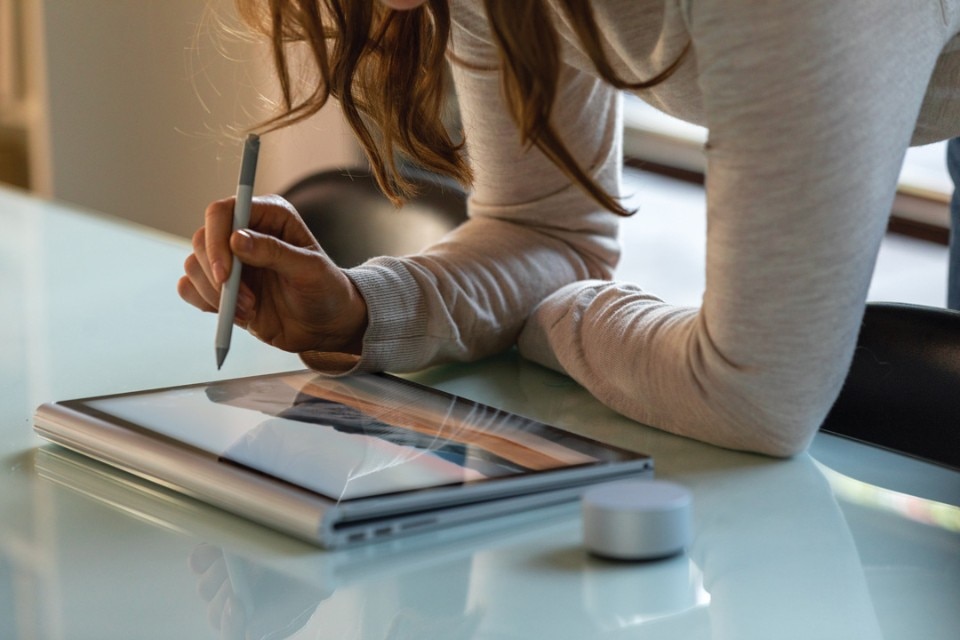
Surface Book as a modular computer: a missed occasion?
“We thought, why don’t we sell the tablet on its own and later on, if you want to upgrade, you get a base with a GPU? But then what we found was the the complexity in retail is quite significant: which processor do you want, which base do you want, and so we decided that we would sell it in a set. However the ideas is very cool and and so as time moves on and the market changes, that’s definitely a concept that we still kicking around”.
A computer for the age of the pandemic
Preparing for my conversation with Mr. Groene, I’ve had the chance to spend some time with the 15” version of the new Surface Book 3 – actually, I’m writing on it at the moment. It’s not the lighter or thinnest laptop in the world, where an “ultrasuperhyperlight laptop”, the so-called ultrabook, has been the object of desire for professionals over for the last few years. But the Surface Book is perfect for working at home or at the bar down the street, which is most of us are doing nowadays because of the pandemic. “The whole interaction with objects has changed because of the virus and no one knows for how long this will go on, as people need to be productive at home” Groene comments. “A 15 inch Surface Book is not the lightest and thinnest of laptops, but for people who don’t have multiple computers and for people who look for a machine to work from home this is an excellent choice. It is still portable enough. Graphic artists, architects, planners, can basically work from wherever they are. There’s definitely a big market for portable and elegant workstations like this. And it’s becoming popular now”.
